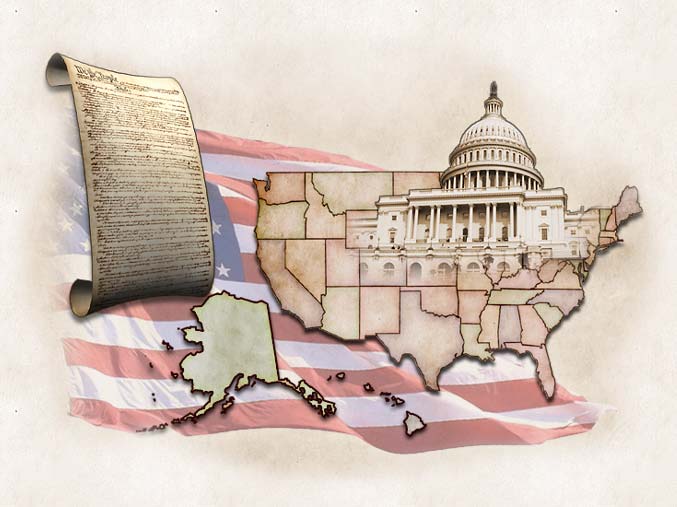United States Department of Defense
U.S. Constitution Course
The Course > Page 5
| < Previous Page | Next Page > |

Imagery:
The Constitution, U.S. Map, Capitol Building, U.S. Flag
Narration:
The Constitution serves as the blueprint for the Federal Government.
On-Screen Text:
The U.S. Constitution serves as the blueprint for the Federal Government and is the supreme law of the land.
The U.S. Constitution specifies the powers and the procedures delegated to the Federal Government.
Powers that are not delegated to the Federal Government in the U.S. Constitution are reserved to the individual states or to the people of the United States.
Want to Know More:
Neither treaties nor state laws can supercede or alter the U.S. Constitution. Alexander Hamilton , in The Federalist Papers , stated that “a treaty cannot be made which alters the Constitution of the country or which infringes on any express exceptions to the power of the Constitution of the United States.”Your Connection with the Constitution:
Narration:
The Department of Defense employee has a special relationship with the United States Constitution. The authority to establish armed forces and provide for the common defense is addressed in the very beginning of the U.S. Constitution.
On-Screen Text:
The authority to establish Armed Forces and provide for the common defense is addressed in the very beginning of the U.S. Constitution.
In the early years, the Constitutional objective of providing a common defense focused on opening the territory immediately beyond the Appalachian Mountains and negotiating a peace with the native Americans who inhabited the area. Within a short time, however, the outbreak of war with the United Kingdom in 1812, skirmishes with the Spanish in Florida, and war with Mexico in 1846 underscored the importance of military strength. As America’s economic and political power increased, its defensive strength grew.